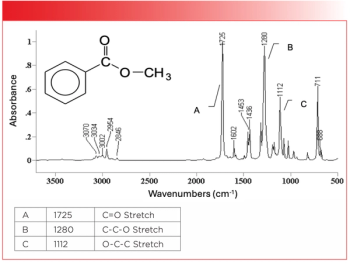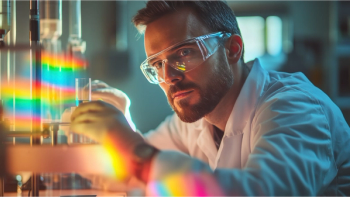
ATR FT-IR and NIR Spectroscopy Reveal the Sources of Microplastics in Biosolids
A recent study compared ATR FT-IR and NIR spectroscopy to identify microplastics in biosolids, finding significant correlations with consumer plastics like polyethylene and polypropylene. These results highlight the role of biosolids in introducing microplastics to agricultural soils and accentuate the importance of accurate identification methods.
The presence of microplastics (MPs) in agricultural soils has become a growing concern, largely due to the widespread application of biosolids as a soil modification. These biosolids, a byproduct of wastewater treatment processes, may inadvertently introduce MPs into the environment, leading to potential ecological and health risks. A new study published in Science of The Total Environment has taken a closer look at the origins of these microplastics by comparing two key spectroscopic techniques: attenuated total reflection Fourier transform infrared (ATR FT-IR) and near-infrared (NIR) spectroscopy. The study aimed to determine which method is more effective in identifying the types of polymers present in MPs extracted from biosolids (1,2).
Read More:
Research Overview and Methodology
The research was a collaborative effort involving scientists from the University of Molise in Italy and Brooklyn College of the City University of New York. The team, led by Luana Circelli and Zhongqi Cheng, focused on identifying the polymeric origins of MPs found in biosolid samples collected from six water resources recovery facilities (WRRFs) in New York City. The MPs were subjected to both ATR FT-IR and NIR spectroscopy, with the results compared against a library of spectra obtained from 52 selected commercial plastics (SCPs) (1).
To extract the MPs, the researchers employed a wet sieving method that separated particles larger than 2 mm from the biosolid samples. These particles were then categorized into different fractions, including plastics, glass shards, and organic fragments. Following extraction, the MPs were analyzed using ATR FT-IR and NIR spectroscopy, with each method providing unique insights into the chemical composition of the MPs (1).
Findings and Analysis
The study found that ATR FT-IR and NIR spectroscopy each have distinct advantages and limitations when it comes to identifying MPs. ATR FT-IR spectroscopy, known for its ability to provide detailed molecular fingerprints, was particularly effective in identifying small MP particles (of 10–100 μm in diameter) and detecting specific vibrational bands associated with chemical bonds like C-C and C-H. However, its effectiveness was somewhat diminished in the presence of organic materials and minerals that can interfere with spectral quality (1).
NIR spectroscopy, on the other hand, was more successful in analyzing larger MP particles (of 100–500 μm in diameter) and proved to be better at identifying polymers like polypropylene (PP) and polyethylene terephthalate (PET). However, it was less effective than ATR FT-IR in identifying polystyrene (PS), a common plastic found in many consumer products (1).
The comparison of spectra from the biosolid-derived MPs with those of the SCPs revealed high correlations with several common polymers, particularly low-density polyethylene (LDPE), high-density polyethylene (HDPE), and polypropylene (PP). The study's radar plots, which visually represented these correlations, showed that each unknown MP sample had strong matches with multiple types of SCPs, with correlation coefficients often exceeding 0.9. This suggests that the primary sources of MPs in biosolids are likely discarded consumer packaging materials, such as containers, bags, and bottles, as well as fibers from laundry and disposable gloves (1).
The study concludes that both ATR FT-IR and NIR spectroscopy are valuable tools for identifying MPs in biosolids, though each method has specific strengths depending on the type of plastic and the size of the particles. While ATR FT-IR offers more detailed molecular information, NIR is more efficient for larger particles and certain polymers. The findings highlight the importance of using multiple spectroscopic techniques in tandem to accurately identify and trace the origins of microplastics in environmental samples (1).
These insights not only contribute to a better understanding of the sources of MPs in agricultural soils but also highlight the need for further research into improving spectroscopic methods for environmental monitoring. As biosolids continue to be used as soil amendments, ensuring the accurate identification of microplastics within these materials will be crucial in mitigating their impact on ecosystems and human health (1)
References
(1) Circelli, L.; Cheng, Z.; Garwood, E.; Yuksel, K.; Di Iorio, E.; Angelico, R.; Colombo, C. Comparison of ATR FT-IR and NIR spectroscopy for identification of microplastics in biosolids. Sci Total Environ.2024, 916, 170215. DOI:
(2) Bläsing, M.; Amelung, W. Plastics in soil: Analytical methods and possible sources. Sci Total Environ.2018, 612, 422–435. DOI:
Newsletter
Get essential updates on the latest spectroscopy technologies, regulatory standards, and best practices—subscribe today to Spectroscopy.




